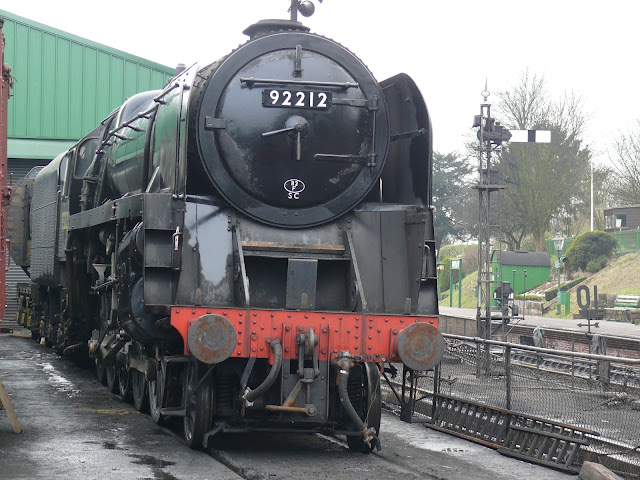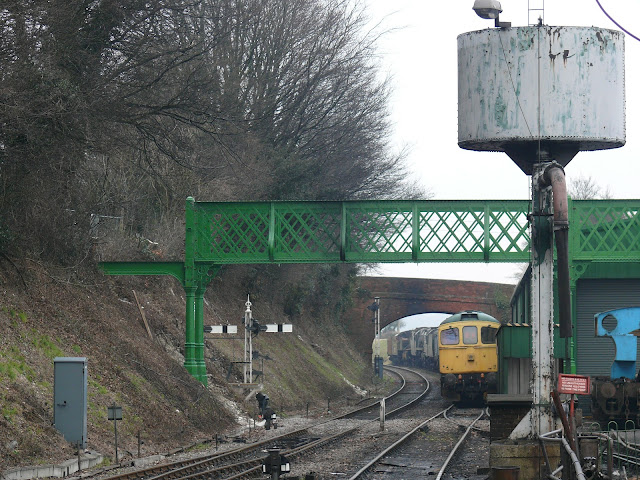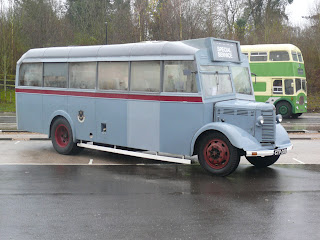Transport Blog
I long time transport fan, from old buses, trams and trolleys, to old and modern trains and model railways, on to old road transport including lorries, cars & steam engines and then aircraft of any era.
Monday, 6 August 2012
Transport Blog: Catch-up Part II Acton Depot Open Day London Under...
Transport Blog: Catch-up Part IIActon Depot Open Day London Under...: Catch-up Part II Acton Depot Open Day London Underground - Piccadilly Line Metro-Cammell and Birmingham RC&W . (1938-tube stoc...
Catch-up Part II
Acton Depot Open Day
London Underground - Piccadilly Line Metro-Cammell and Birmingham RC&W. (1938-tube stock)
This Piccadilly Line stock was an addition to the 1,121 cars built for the Bakerloo & Northern lines. The additional 167 cars (91 new builds plus 76 conversions) for the Picc line were used on the London Underground until 1988. Although, some examples are still at work on the Isle of Wight as Class 483, making them the oldest passenger rolling stock operating timetabled services on the National Rail network.London Underground - 1967 Victoria Line Tube stock.
Built by Metro-Cammell the 1967 Stock was a fleet of deep-level tube stock which operated on the Victoria Line from when the line first opened on 1 September 1968 until 30 June 2011. 316 cars were built. The stock was the first opportunity to build cars which included many of the enhancements tried out in the 1960 Stock. They were designed for the Victoria Line, and each train consisted of eight cars, marshaled as two four-car units. Each unit had a driving motor car at both ends, and two trailer cars between them. This refurbished motor car in which Queen Elizabeth II traveled during the official opening of the line in 1969, number 3052, is preserved in a non-working condition. It was withdrawn from service in October 2010.Type UCC "Feltham" double deck electric tram No 355 - electric tram
This vehicle began its life in 1931, working from Finchley depot in north London. It had been built at Feltham in Middlesex. The streamlined design was adopted as the new standard and referred to as the Feltham type. In 1936, the Finchley routes were changed to trolleybuses and this tram was moved to routes around Brixton and Streatham. The Feltham tramcars were the last class of trams to be built for service in London. Trolleybuses proved to be flexible and more popular with the public and eventually took over from the trams.1931. A1-class "Diddler" trolleybus No 1, registration HX2756 - trolleybus.
This is the first London trolleybus. It was based at Fulwell depot, west London, the only depot dedicated to trolleybus operation and repairs. Trolleybuses were introduced by London United Tramways, which was part of the Underground Group. The design is based on the L.T.-type bus. The type became known as 'diddlers'. In 1948, the early trolleybuses were withdrawn from service having become worn out and in poor condition. By 1952 most were scrapped, but this Number 1 was preserved by the Museum of British Transport.1935 Q-type AEC single deck motor bus.
The Q-type was a revolutionary new design. Introduced by the London Passenger Transport Board and built by Associated Equipment Company (AEC). This bus had its engine mounted upright behind the driver. Number Q55 spent most of its working life operating on Country Area services around the Home Counties. During 1939-45, it was converted into an ambulance. When the Q-types were withdrawn from service in 1952, many were exported for use in the Mediterranean and Africa.1931, ST821 AEC Regent. In London Transport "Country" livery
This bus spent its life working on the Country Area services and was based at a number of different garages around outer London. The S.T.-type bus was based on the new 'Regent' chassis produced by AEC and introduced in 1930. The early models were operated by Thomas Tilling Limited on behalf of the London General Omnibus Company. Many of the early versions were subsequently sold to government agencies and converted into armoured cars.Friday, 3 August 2012
Catch-up time
Well it's been a while since I last blogged!! So here is a bit of an update on transport things I have seen and done, since Jan 2012.
Feb 14th 2012 at Ropley on Mid-Hants Railway.
British Railways Standard Class 9F - No. 92212, built in 1959 in Swindon, 2-10-0 wheel arrangement, operated in Southern, Western, Eastern, Midland, Scottish regions of BR. Designed for BR by Robert Riddles. The 9F’s were the last in a series of standardised locomotive classes designed for BR during the 1950s, and was intended for use on fast, heavy freight trains over long distances. It was one of the most powerful locomotive types ever constructed in Britain and successfully performed its intended duties. The total number built was 251, production being shared between Swindon (53) and Crewe Works (198). The last of the class, 92220 Evening Star, was the final steam locomotive to be built by BR, in 1960. Withdrawals began in 1964, with the final locomotives removed from service in 1968. Several examples have survived into the preservation era in varying states of repair, including Evening Star.
Construction work continues on the old Kings Cross (Harry Potter) bridge. That once spanned the platforms at Kings Cross station.The bridge will connect the upper car park area, to the yard and the new carriage shed gallery viewing area.
LMS 45379 is one of the successful “Black Five” 4-6-0 mixed traffic locomotives designed by William Stanier. Built by Armstrong Whitworth of Newcastle in July 1937 , 842 of this class were built . 45379 was operated by BR in the Midland and Scottish regions, it was moved to Willesden in 1964 from where it was withdrawn in the summer of 1965 going to Barry scrap yard later that year. In 1974 45379 was bought for restoration on the Avon Valley Railway, later going to The Great Central Railway. It was bought from there by MHRPS coming to Alresford on 1st March 2002.
British Railways Standard Class 4MT - No. 75079, as can be seen this loco is very much under restoration. 75079 is a BR standard Class 4 4-6-0 mixed traffic locomotive built at Swindon in January 1956, one of a batch built 80 for the Southern Region.The loco was withdrawn in 1966 and sent to Barry scrap yard, where it stayed until 1982. When it was bought by Plymouth City Council and restoration started at the Plym Valley Railway. In 2007 MHRPS bought the loco and restoration is now (2012) in progress.
Tuesday, 3 January 2012
Pics FoKAb 01.01.12
I bit later than planned, but here are some pics etc from the Friends of King Alfred Buses service day. it was a great day as usual, a shame that the weather turned bad in the afternoon. As you will see below.
My first trip out on the day, was to Stockbridge on 1962 Leyland Atlantean with a Weymann L30/34f body, in Silver Star livery reg 1013 MW
After traveling back to Winchester on the Bristol. The next trip was to Hursley on service 66 , which was being operated by Wilts & Dorset 1969 Bristol RELL6G reg MMW 354 . This bus entered service at Salisbury, it was sold in 1985 Serviceair at Stanstead, then to Pennie Blue and was acquired in 2005 for preservation.
After a pint in the Kings head at Hursley, it was back onto the Bristol to return to Winchester. And out again, this time to Tywford, with service 93on a 1980 Bristol VRT. No pic though.
As the rain was coming down in bucket fulls, the bus were all full, so I took a break in the Transport Bazaar which was being held in the Guildhall. But at least I managed to get a few pics from the Guildhall and outside the Bus Station.
Above is Bedford VAL 14, Plaxton Panorama C49F, reg CCG 704c in King Alfred colours. The coach was originally supplies to KA in 1965 and subsequently transferred to Hants & Dorset and re-bodied in 2001.
I did get this Bristol RELH/ECW out to the St Cathrine's park & ride site. This Southern National liveried coach No.1457 coach started life in 1967 and after many owners, was repainted as above in 2010 by the Stroud RE group.
At the park & ride there were a few vehicles including the following.
This Bedford OWB Utility Bus, reg CPT 200, was supplied to Portsmouth in 1943. This wooden framed bus was not meant to be in service long and is fitted with wooden slatted seats. However, the bus was in service until 1962. Currently painted in utility grey, instead of the original bauxite red.
1965 Southdown Leyland PD3 Queen Mary reg BUF 287C, with 1980 Dennis Dominator/East Lancs reg FUT 240V, 1969 Bristol RELH/ECW reg AFM 103G, supplied to Crosville and right at the back of pic London Transport AEC Merlin MB90.
More pics to follow.
My first trip out on the day, was to Stockbridge on 1962 Leyland Atlantean with a Weymann L30/34f body, in Silver Star livery reg 1013 MW
Which in Stockbridge met-up with Bristol LH 461 (AFB 592V) is preserved in the green National Bus Company livery it would have carried when new in 1980.
After a pint in the Kings head at Hursley, it was back onto the Bristol to return to Winchester. And out again, this time to Tywford, with service 93on a 1980 Bristol VRT. No pic though.
As the rain was coming down in bucket fulls, the bus were all full, so I took a break in the Transport Bazaar which was being held in the Guildhall. But at least I managed to get a few pics from the Guildhall and outside the Bus Station.
Above is Bedford VAL 14, Plaxton Panorama C49F, reg CCG 704c in King Alfred colours. The coach was originally supplies to KA in 1965 and subsequently transferred to Hants & Dorset and re-bodied in 2001.
I did get this Bristol RELH/ECW out to the St Cathrine's park & ride site. This Southern National liveried coach No.1457 coach started life in 1967 and after many owners, was repainted as above in 2010 by the Stroud RE group.
At the park & ride there were a few vehicles including the following.
This Bedford OWB Utility Bus, reg CPT 200, was supplied to Portsmouth in 1943. This wooden framed bus was not meant to be in service long and is fitted with wooden slatted seats. However, the bus was in service until 1962. Currently painted in utility grey, instead of the original bauxite red.
1965 Southdown Leyland PD3 Queen Mary reg BUF 287C, with 1980 Dennis Dominator/East Lancs reg FUT 240V, 1969 Bristol RELH/ECW reg AFM 103G, supplied to Crosville and right at the back of pic London Transport AEC Merlin MB90.
More pics to follow.
Saturday, 31 December 2011
Friends of King Alfred buses (FoKAb) 01.01.12
If you want to see many old buses running on the Winchester King Alfred bus routes, then get down to Winchester tomorrow and enjoy free rides and a bit of history. Many like myself and my friends, use the day to travel out to local villages to sample some fine real ales in country pubs. It also means there no problem with drinking and driving. Last year I missed the day, as the weather and a cold conspired to stop me going. This year it maybe a bit wet, but mild and no cold.
King Alfred, 595 LCG a 1964 AEC Renown 3B2RA, built by Park Royal at a wet Alton bus rally in 2010.
Lets hope after tomorrow I can upload a few pics of the day.
King Alfred, 595 LCG a 1964 AEC Renown 3B2RA, built by Park Royal at a wet Alton bus rally in 2010.
Lets hope after tomorrow I can upload a few pics of the day.
Friday, 30 December 2011
A day out in the east of england
My first blog (ever) 30.12.11
Thanks to First Capital Connect and their 5 free tickets, I've been out and about again today. After a start at 4.30am this morning (not my usual time to get up), to get a friends mother to Luton Airport for 6am for an 8am flight back to Belgrade. So I decided that I should go off on a trip to Peterborough via Cambridge and Ely. 8.09 from Ash Vale, up to Waterloo and across to Kings Cross on the Northern and Victoria lines. From Kings Cross it was off on the 09.45 service to Kings Lynn, which is actually a good service, only taking 1 hour 5 minutes to get to Ely. Where there is a varity of TOC's (FCC, East Midlands and National Express) and various freight companies passing through the area.
FCC 365540 at Ely on an earlier visit.
So from Ely at 10.58, it was on to a National Express East Anglia service with 170207. On the way across those low lying Fens of Cambridgeshire, where the soil is coal black, we passed a couple of passenger services going towards Ely. As well as some freight trains heading east, including class 70 70007 on a container, or is it an inter modal service?
Peterborough, is a good place to watch the railway world, with not only the services going across country, from east to west, but also those charging (ok, not all charging) up and down the East Coast mainline. My assumption for it being a good place, is borne out by the number of young and not so young (in fact, more not so young) railway enthusiast around the station, even on a cool December day.
Freightliner class 66 no. 66526, which had followed me from Ely.
Eurocargo Class 66 no. 66010 with a side body sticker, under the rear cab window, detailing the locomotives European loco details.
East Midland Trains class 158 no. 158854 on a Liverpool to Norwich service with Freightliner loco 66598 away in the distance.
For a southern rail man like myself, Peterborough is well worth a visit once in a while. Giving me a taste of the north, well ok the east and midlands, with a splash of the north. But in addition to these long haul services, from East Anglia to the North west and London to Scotland. There are the local services for the area too, from Doncaster/Lincoln to Peterborough where East Midland trains operate their one car class 153 units.
East Midland Trains Class 153 no. 153313 on a Peterborough to Lincoln service.
So after such an early start to the day, I'm now off to chill and sleep. But I hope to be out and about on the rails again soon. And in the meantime, I may download here a few other pics from my collections.
Cheers
Paul
Thanks to First Capital Connect and their 5 free tickets, I've been out and about again today. After a start at 4.30am this morning (not my usual time to get up), to get a friends mother to Luton Airport for 6am for an 8am flight back to Belgrade. So I decided that I should go off on a trip to Peterborough via Cambridge and Ely. 8.09 from Ash Vale, up to Waterloo and across to Kings Cross on the Northern and Victoria lines. From Kings Cross it was off on the 09.45 service to Kings Lynn, which is actually a good service, only taking 1 hour 5 minutes to get to Ely. Where there is a varity of TOC's (FCC, East Midlands and National Express) and various freight companies passing through the area.
FCC 365540 at Ely on an earlier visit.
So from Ely at 10.58, it was on to a National Express East Anglia service with 170207. On the way across those low lying Fens of Cambridgeshire, where the soil is coal black, we passed a couple of passenger services going towards Ely. As well as some freight trains heading east, including class 70 70007 on a container, or is it an inter modal service?
Peterborough, is a good place to watch the railway world, with not only the services going across country, from east to west, but also those charging (ok, not all charging) up and down the East Coast mainline. My assumption for it being a good place, is borne out by the number of young and not so young (in fact, more not so young) railway enthusiast around the station, even on a cool December day.
Freightliner class 66 no. 66526, which had followed me from Ely.
Eurocargo Class 66 no. 66010 with a side body sticker, under the rear cab window, detailing the locomotives European loco details.
East Midland Trains class 158 no. 158854 on a Liverpool to Norwich service with Freightliner loco 66598 away in the distance.
For a southern rail man like myself, Peterborough is well worth a visit once in a while. Giving me a taste of the north, well ok the east and midlands, with a splash of the north. But in addition to these long haul services, from East Anglia to the North west and London to Scotland. There are the local services for the area too, from Doncaster/Lincoln to Peterborough where East Midland trains operate their one car class 153 units.
East Midland Trains Class 153 no. 153313 on a Peterborough to Lincoln service.
So after such an early start to the day, I'm now off to chill and sleep. But I hope to be out and about on the rails again soon. And in the meantime, I may download here a few other pics from my collections.
Cheers
Paul
Subscribe to:
Comments (Atom)






















